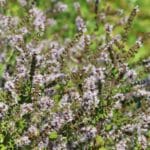Deer gracefully leaping through meadows are a picturesque sight, but when those same deer decide your garden is their personal salad bar, the charm quickly fades. Many gardeners believe marigolds offer an impenetrable defense. Let’s separate fact from fiction and explore the nuanced relationship between deer and marigolds, offering practical advice for protecting your precious blooms.
Marigolds and Deer: A Nuanced Relationship
The notion that marigolds repel all deer is, unfortunately, a bit of a garden myth. While these cheerful blossoms do possess a pungent, often citrusy aroma (thanks to compounds like limonene and ocimene) and a texture some deer find unappealing, they aren’t a foolproof solution. Think of marigolds as part of an integrated pest management strategy, rather than a magical force field. They’re one valuable tool in your arsenal, not an impenetrable fortress.
Deer, like us, have preferences. A hungry deer, especially late in the season or during harsh winters when food is scarce, may be less discerning and willing to overlook a marigold’s less desirable qualities. Their dietary choices aren’t always predictable; local populations might develop different tastes depending on available forage. What one deer avoids, another might munch on out of necessity. Research suggests that young, tender annuals are particularly appealing, making your vibrant summer display a potential deer buffet.
Maximizing Marigold Protection: Choosing the Right Variety
Just as there are different types of deer, there are different types of marigolds. Some varieties are more likely to deter deer than others. French marigolds (Tagetes patula) and signet marigolds (Tagetes tenuifolia), with their compact size and potent fragrance, tend to be more effective. Their concentrated aroma creates a dense, fragrant barrier that deer may find off-putting. Larger varieties, like African marigolds (Tagetes erecta), while visually striking, might offer slightly less protection due to their milder scent.
Building a Multi-Layered Defense: Beyond Marigolds
While marigolds can be helpful, they’re most effective as part of a broader strategy.
Companion Planting for Deer Control
Strategically planting marigolds alongside other deer-resistant plants enhances their protective power. Imagine a fragrant mix of marigolds, lavender, rosemary, and other strongly scented herbs—like mint— surrounding your more vulnerable plants. This creates a confusing and unappetizing aroma-scape that deer are likely to avoid. Other deer-resistant annuals like cosmos and nasturtiums, along with perennials such as bleeding hearts, coneflowers (Echinacea), corydalis, coreopsis, and daffodils, can contribute to a less appealing garden for deer. They’ll probably steer clear of this olfactory overload in search of easier pickings. Discover more about companion planting with our article on marigolds. (Internal link placed in context)
Physical Barriers: Your First Line of Defense
A well-placed fence remains your primary defense against deer intrusion. While marigolds act as your aromatic infantry, a fence serves as the impenetrable wall of your garden fortress. For most deer, a 2-meter (6.5-foot) fence is sufficient, but larger species like red deer may require a taller barrier of around 2.4 meters (8 feet). Remember, persistent deer might attempt to jump or crawl under fences, so ensure it’s sturdy and well-maintained.
Deer Repellents: Adding Extra Protection
Commercial or homemade repellents can further fortify your garden’s defenses. Repellents containing putrescent egg solids, hot peppers, or other strong-smelling ingredients can offend a deer’s sensitive nose. There is debate among gardeners about the efficacy of homemade solutions compared to many effective products at your local garden center. Barrier repellents create an invisible perimeter, while feeding repellents, applied directly to plants, make them taste unpleasant. (Internal link placed in context) Remember that repellents often require reapplication, especially after rain.
Scare Tactics: Startling Unwanted Visitors
Motion-activated sprinklers can surprise and deter deer, while reflective tape creates visual disruptions that can confuse and frighten them. Noisemakers, such as wind chimes or rattling cans, provide auditory deterrents. Keep in mind, though, deer can habituate to scare tactics over time, so it’s beneficial to vary them or integrate them with other deterrents.
Choosing Deer-Resistant Plants
Though no plant is entirely deer-proof, some are naturally less appealing. Deer tend to avoid plants with strong scents, fuzzy textures, or thorny leaves. Incorporating these into your garden design can make it less attractive overall to browsing deer. Examples include lavender, mint, daffodils, foxgloves, and poppies. Researching what works best in your region is crucial, as deer preferences vary.
Do Deer Eat Geraniums? Another Fragrant Defense
Like marigolds, geraniums (Pelargonium) often deter deer with their strong, often citrusy scent and slightly bitter taste. This combination often acts as a natural repellent, similar to how a disliked perfume might send you scurrying from a room. However, this defense isn’t absolute. A starving deer might overcome its aversion, particularly in areas with high deer pressure and limited food. Explore our more complete guide to geraniums and deer resistance. (Internal link placed in context)
Tailoring Your Strategy: Observation and Adaptation
Deer behavior changes throughout the year, influenced by mating season, food availability, and environmental conditions. During mating season, bucks may be less cautious, and winter scarcity can drive deer to try plants they normally avoid. This means your strategy may need seasonal adjustments. Consistent observation of deer activity in your garden is key; note their preferred targets, timing of visits, and any patterns. This knowledge empowers you to refine your approach and stay ahead of their browsing habits.
Creating a truly deer-resistant garden is an ongoing experiment. The most successful approach combines multiple tactics adapted to your specific circumstances. Consider your garden’s size, budget, local deer pressure, and personal preferences. With a bit of trial and error, patience, and persistence, you can achieve a thriving garden that minimizes deer damage, encouraging them to seek sustenance elsewhere. Learning about specific breeds like the F1BB Goldendoodle or creatures like the fahaka puffer, even the biggest Shire horse, Goliath can enrich your understanding of the natural world and its intricate interactions. (Internal links placed in context)












